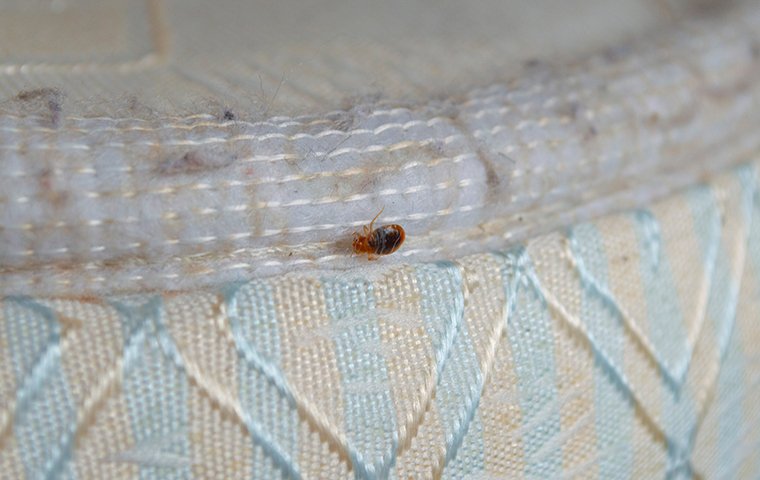WHAT ARE BED BUGS?
The bed bug is a type of insect that feeds only on the blood of warm-blooded mammals, with people being their favorite hosts; if people are not available, they may feed on other animals, including our pets. Bed bugs are prolific pests worldwide and found in every state across the U.S. They are especially problematic in New York city and other urban areas where large numbers of people come and go and are in close contact with each other daily.
Bed bugs are nocturnal creatures that hide during the day and emerge at night to feed on their sleeping hosts. Bed bugs find human hosts through our body heat and the carbon dioxide we produce as we breathe. These oval-shaped insects lack wings and move from location to location by hitchhiking.
ARE BED BUGS DANGEROUS?
Bed bugs bite in order to feed, producing raised, itchy welts that may lead to a secondary infection with excessive itching that requires medical attention. They are not known for spreading diseases but can harbor some disease-causing pathogens. In addition to posing health risks, bed bugs are prolific breeders and quickly establish large populations wherever they end up. Their excrement and feeding habits cause staining on walls, floors, fabrics, and upholstery, and a strong, musty odor may develop wherever there are large numbers of bed bugs.
WHY DO I HAVE A BED BUG PROBLEM?
Bed bugs, like other animals, prefer to live near their food sources, and coming into contact with bed bugs occurs in a variety of public places, where they will crawl onto clothing or personal belongings and then hitchhike their way to a new destination. They also move into homes inside used box springs, mattresses, and upholstered furniture.
WHERE WILL I FIND BED BUGS?
Bed bugs live and hide in airports, bus stations, hotels, museums, movie theaters, libraries, schools, hospitals, shopping centers, and any other public place. Inside, you’ll find bed bugs hiding around sleeping areas; as the infestation grows, they move through walls and floors, infesting multiple rooms – or, in apartment complexes, from unit to unit.
Other common hiding spots include the following:
- Floors
- Baseboards
- Wall voids behind electrical outlets
- Keyboards
- Electronics
- Under dirty laundry
- Behind wall hangings, pictures, and clocks
HOW DO I GET RID OF BED BUGS?
Partnering with Broadway Pest Services is the best way to get rid of bed bugs from your New York City property. Our pest management technicians are highly trained and use the latest advancements in technology and science to effectively eliminate pests from residential and commercial properties. Broadway Pest Services provides excellent customer service and the pest control services needed to get and keep bed bugs out using inspection, treatment, and guaranteed services.
At Broadway Pest Services, we know the pests that find their way into New York City structures and how to protect people and property from the damage and danger they create. If you would like to learn more about our bed bug control solutions, reach out and speak to one of our helpful and friendly professionals today!
HOW CAN I PREVENT BED BUGS IN THE FUTURE?
In addition to our residential pest control and commercial pest control service offerings, our professionals recommend the following tips:
- Change and wash bedding weekly and inspect mattresses and box springs for signs of bed bugs.
- Always inspect your hotel room for signs of bed bugs before bringing luggage inside.
- Immediately wash and dry any new clothes on a high heat cycle.
- Keep your home free of clutter where bed bugs like to hide.
- Vacuum your floors regularly.
- Place bed bug-proof covers on all mattresses and box springs.
- Do not purchase used mattresses, box springs, and furniture for your home.
- After traveling, wash your clothing on the highest heat settings the fabrics can handle.
- When out in public, or at work or school, keep personal belongings away from other people’s belongings and up off of the ground.

